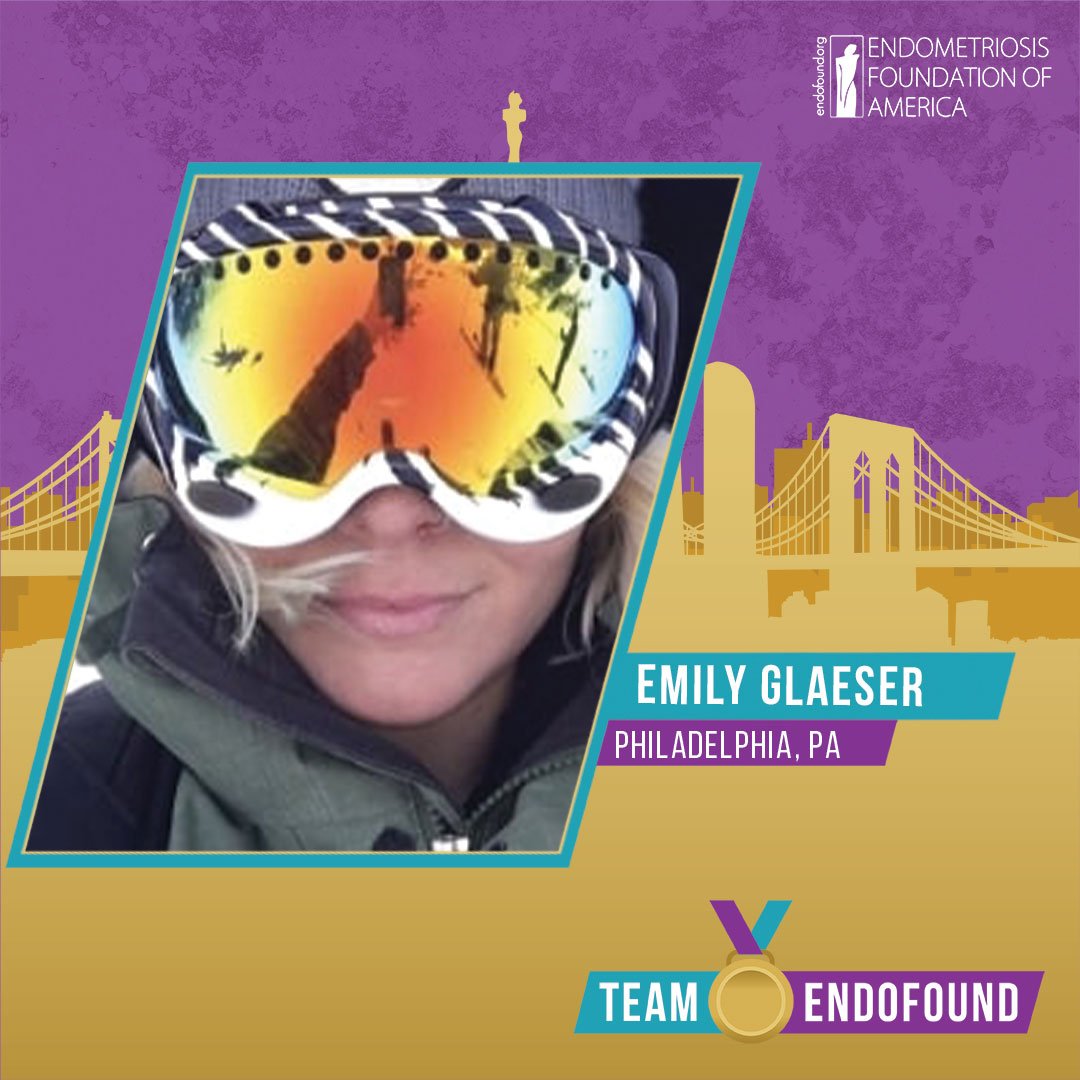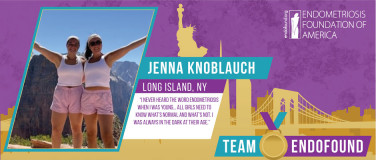
Emily Glaeser played sports as a kid even though she despised running.
“I would do anything to get out of it,” she said. “I’d hide in a bush if I could.”
And yet, in 2011, just a few months after her first of five endometriosis surgeries, Glaeser signed up to do something that even surprised her—run a half marathon. It was in San Diego, about 90 minutes south of her home in Newport Beach.
“I still don’t know why I did it,” she said. “Maybe it was just to show people I could. I think it also numbed the pain from the endometriosis because the rest of my body hurt so much from running. And now I run all of my races for charity, so that adds a nice element to it.”
The New York City Marathon on Nov. 3 will be Glaeser’s eleventh full marathon. It will be her tenth time running this one to go with a Chicago Marathon finish last year. She’s part of EndoFound’s Team EndoStrong for the second year in a row and has already surpassed her $4,000 fundraising goal. The team of 50 runners is trying to raise $250,000 for the foundation.

Click Here To Support Emily Glaeser's Marathon Fundraiser
Glaeser, a fashion designer and nanny, is originally from Philadelphia and lives there today. She first experienced symptoms in high school at 14 when she had significant pain and bled for three months straight. She was too young to know what was normal and what wasn’t.
“I’d never heard of endometriosis, and doctors just said it was due to a hormonal imbalance,” Glaeser said. “They said, ‘Let’s put you on birth control; that will help.’ But it never did, and the pain got worse.”
She pushed through high school, going undiagnosed until 2008 at age 19 when she was living in California. She had her first endometriosis surgery in December 2010, the first of three laser surgeries over the next decade on the West Coast. None of them improved her condition.
“The surgeon never really said anything after each one other than it could grow back, and it always did,” Glaeser said. “I felt like I was having some sort of procedure every year, whether it was removing endometriosis or a D&C [dilation and curettage] to remove a polyp they thought could be causing the bleeding.”
Glaeser’s symptoms worsened over that decade—the pain excruciating, the bleeding heavier, and severe bloating common. She often relied on heating pads to get her through the day. She couldn’t do anything when she was having her period. Plans with friends were always on standby because she didn’t know how she’d feel.
“It was draining,” Glaeser said. “You feel like you’re not being taken seriously, which makes you wonder if what you’re feeling is real since nobody else seems to be experiencing it.”
Through it all, doctors continued to insist that birth control would help and switched her from one to another to find one that would work. They all failed.
“Birth control never worked. I was still getting cysts. I was still bleeding heavily. Everything doctors told me it would help—it didn’t. I just had to live through it,” Glaeser said. “It wasn’t until I ended up in the ER in November 2020 when a cyst burst that things started to change.”
Glaeser had just moved back to Philadelphia when that happened.
“I couldn’t find a doctor locally who knew about or understood endometriosis or would listen to me. They’d just say there was nothing they could do for me,” she said. “And then my mom and I found Dr. Seckin in New York.”
Dr. Tamer Seckin is the founder of the Seckin Endometriosis Center and the cofounder of EndoFound. He and Dr. Amanda Chu would perform two excision surgeries on Glaeser, in 2021 and April 2024.
“That was the first time anyone had explained things to me,” Glaeser said. “Dr. Chu wouldn’t just say that something was my only option. She’d make a suggestion, break down the reasoning behind it, and then do what needed to be done. Until I went to them, I really just lived through endometriosis without understanding it.”
Glaeser said when she had her surgeries in California, the surgeon’s target with the laser was always her ovaries.
“Dr. Seckin found it on my appendix, my bowels, my bladder. It was on all these other places nobody had ever looked at,” Glaeser said.
She said she felt great after the 2021 surgery but had to have the second one in April when she began feeling some symptoms again. The disease had grown back in a couple of places and was excised. For the first time since high school, Glaeser is not on birth control.
“I’m feeling better than ever,” she said. “It’s like night and day. I said to myself after the surgery, ‘Huh, so this is how people live.’”
Glaeser started training for the marathon in July.
“People say I’m crazy to do it so soon, but it’s going well,” she said. “I have a coach this year, but since I just had surgery, I’m not worried about my time. My only goal is to finish.”
Glaeser encourages anyone with endometriosis to find an outlet, such as running.
“And use your voice to advocate for yourself,” she said. “If you know something’s not right, push! Push for more tests, go to a new doctor, do what you have to do. Just don’t give up. Keep going. And share what you’re going through with those around you because you never know who may know someone who can help you.”
To donate to Emily Glaeser’s cause, visit https://give.endofound.org/fundraiser/5532984.









